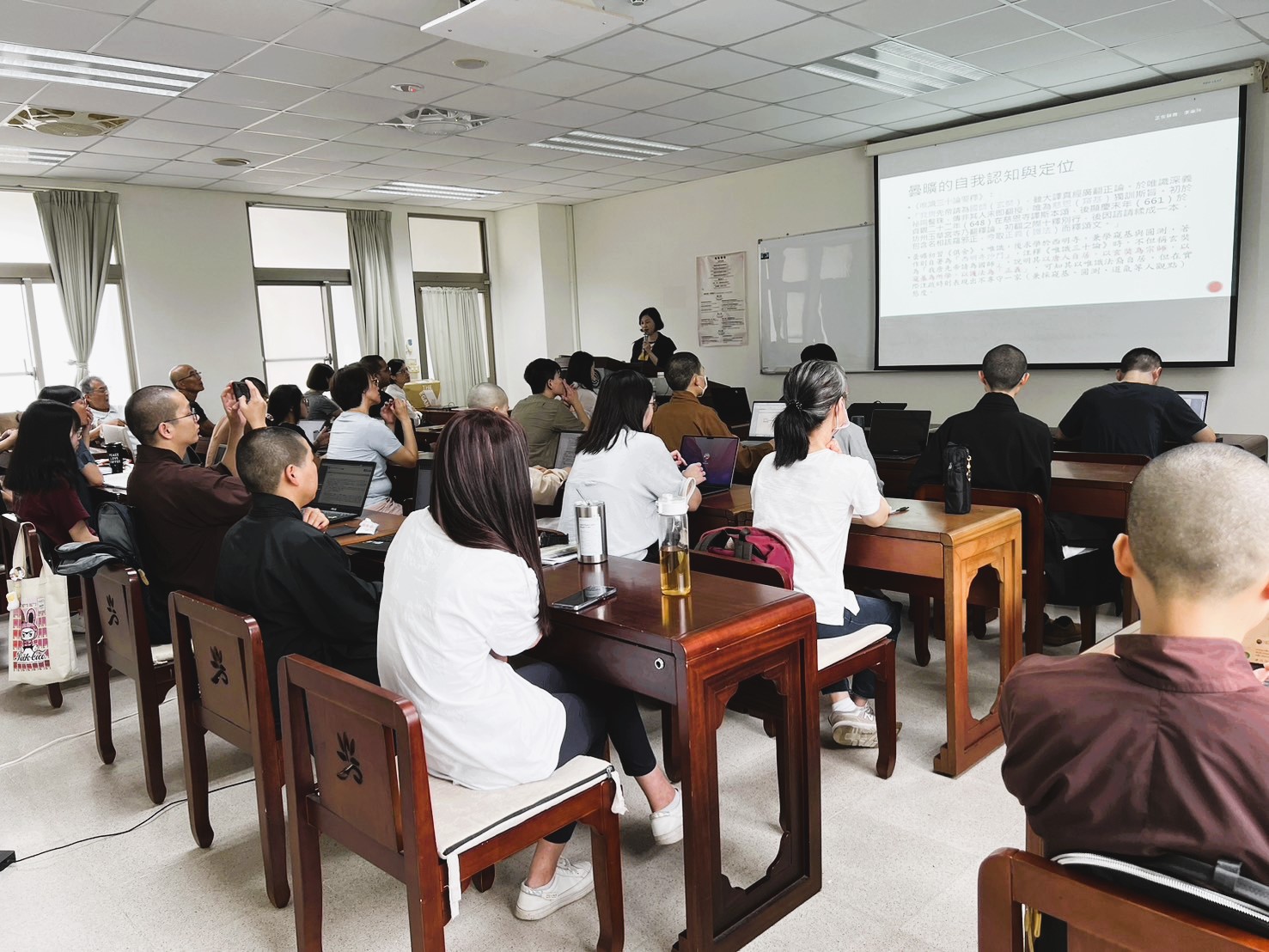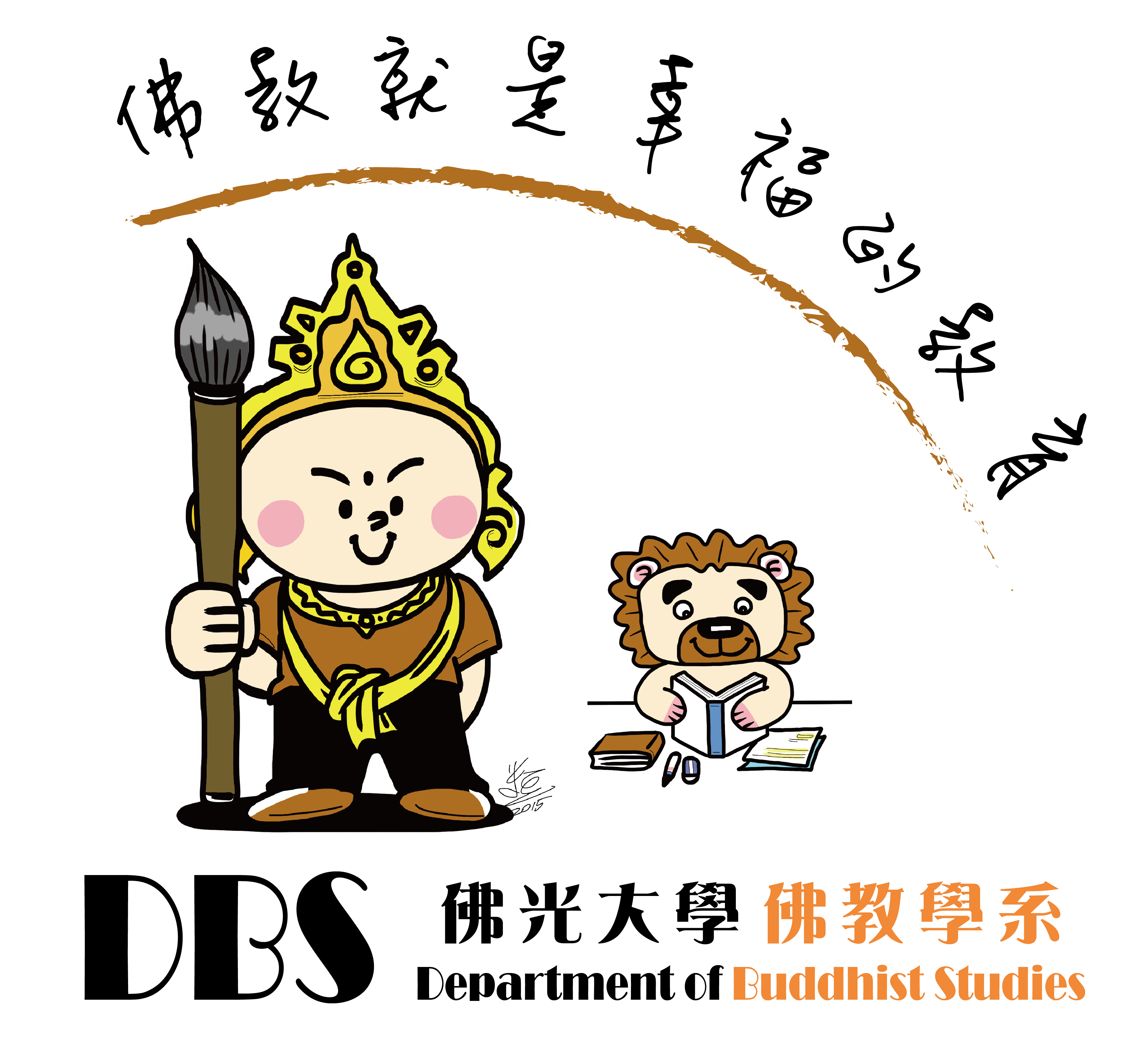On June 11, Professor Hsing-Ling Lee from the Department of Chinese Literature at National Taiwan Normal University was invited by the Buddhist Studies Center of Fo Guang University to deliver a lecture titled "The Consciousness-Only Scholar Tan Kuang in the Dunhuang Manuscripts of the Tang Dynasty" as part of the 2023-2024 Buddhist Teaching Workshop. Initially focused on the study of theaLotus Sutra and hermeneutics, Professor Lee later became an expert in Dunhuang manuscript studies. Approximately 40 faculty members and students attended the lecture.
 The lecture highlighted the eminent Tang Dynasty Faxiang School monk Tan Kuang. Professor Lee began by noting that Buddhism was very prosperous during the Tang Dynasty. Tan Kuang, an important figure in the Dunhuang Buddhist history of the Tang Dynasty, was known for his significant contributions to the exegetical tradition in the Hexi region. Professor Lee compared Tan Kuang's influence in Hexi to that of the great Buddhist scholars Jizang and Xuanzang in their respective fields. However, due to the absence of his works in the Taisho Tripitaka, research on Tan Kuang is relatively scarce.
The lecture highlighted the eminent Tang Dynasty Faxiang School monk Tan Kuang. Professor Lee began by noting that Buddhism was very prosperous during the Tang Dynasty. Tan Kuang, an important figure in the Dunhuang Buddhist history of the Tang Dynasty, was known for his significant contributions to the exegetical tradition in the Hexi region. Professor Lee compared Tan Kuang's influence in Hexi to that of the great Buddhist scholars Jizang and Xuanzang in their respective fields. However, due to the absence of his works in the Taisho Tripitaka, research on Tan Kuang is relatively scarce.Using Tan Kuang’s autobiographical accounts and preserved works found in Dunhuang manuscripts, Professor Lee conducted a detailed analysis. These documents, written by his disciples, provide invaluable research material reflecting the characteristics of translation and exegesis in the Tang Dynasty.
Professor Lee emphasized Tan Kuang’s eclectic and inclusive approach to Faxiang thought. His commentaries reveal influences from Kuiji, Yuan Ce, Fazang, and Dao Yin.
The discovery of Tan Kuang’s works challenges certain established conclusions in Buddhist history. For example, his annotations on the Shikshananda version of the "Awakening of Faith in the Mahayana," dated to the early 8th century, prompt a reevaluation of the doubts raised by Lü Cheng and Master Yinshun about the authenticity of the text being attributed to Chan Buddhism in the 9th century.
Furthermore, Professor Lee used examples from the "Essence of the Vajra Prajna Sutra" and the "Extensive Commentary on the Awakening of Faith in the Mahayana" to explain the standard format of Dunhuang manuscript transcription. The lecture concluded with a discussion on the rich online resources available for Dunhuang studies, encouraging more people to join the field of research.


 College and Department of Buddhist Studies, FGU
College and Department of Buddhist Studies, FGU